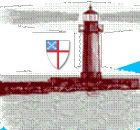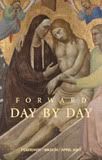Thursday, July 10, 2008
Sermon for July 13th, 2008
Sermon for July 13, 2008
St. James’ Goshen, IN
Arthur Hadley
For the next several weeks the Gospel lessons will be about Jesus using stories about growing seed, making bread and using bread to feed the hungry people. Jesus used stories, parables, about very common well known everyday things to explain the Kingdom of God. He used what people knew to explain something that they did not know. When trying to describe something unknown to someone you always have to start with something they already know. You and I know that the first automobiles were called "Horseless Carriages". When my two year old grandson first saw an Amish buggy, we had to explain to him that the horse and buggy were like automobiles pulled by a horse. And he would say with great glee "horse - e - buggy". A hundred years ago automobiles had to be described as a horseless carriage, but today a horse and buggy has to be explained as a horse pulling an automobile. Some of the stories that Jesus told explaining that the Kingdom of God is like something people knew really do not work very well in our society. Today’s stories still work fairly well.
A sower went out to sow some seeds. Some of the seed fell on a path and birds came and ate the seed. Other seed fell on rocky ground; the seed quickly sprouted, but had no soil for the roots and the sprouted seed withered away. Other seed fell among the thorns and weeds which grew quickly, choking out the seedlings. But other seed fell on good soil and brought forth grain some one hundred fold some sixty and some thirty.
This simple story of the sower spreading seed was understandable to the people waiting to hear Jesus as he taught near the coast of the Sea of Galilee in northern Israel. The fields in Galilee near the fresh water lake of Galilee are flat, fertile and irrigated out of the lake and Jordan River, but as you move away from the coast lands into the hills going up to Nazareth, the land becomes rock strewn and filled with briers . The people hearing Jesus knew those fertile fields and rock strewn hills. They knew that wheat grew best in the fertile fields. But Jesus was using what they knew to explain that he was talking about the Word of God, is like the seed he was sowing: some of those hearing the Word of God were like the pathway and the birds would come and quickly eat the seed. Others were like rocky soil and others like soil already growing weeds and thorns. Some who hear the Word of God simply would not get it, like the seed on the pathway eaten by the birds. Some would hear the word and allow it to sprout, but it would soon wither and others would have the growing seedling be crowded out by weeds and thorns, the cares of the world. But some will hear the Word of God and with them it will sprout, grow and multiply by 30, or 60 or even by 100.
Wheat is a wonderful example of the multiplication of the seed to harvest. In good soil a seed of wheat will send up more than one stalk of grain, sometimes two some times three and maybe even four or five. Each stalk can produce a head with thirty to fifty new seeds. We plant about a half bushel of wheat seed per acre and expect to harvest more that fifty bushel per acre….a multiple of 100.
So the person who hears the Word of God and allows it to grow in a fertile mind, heart and soul can produce Thirty, sixty even one hundred fold. Jesus was talking to many people and He knew some would not hear or understand, some would try but fail to grow, but some would really receive the Word of God and make it grow.
And the Word of God has grown from those who heard Jesus in Galilee to Goshen.
Thanks be to God.
Subscribe to Posts [Atom]








